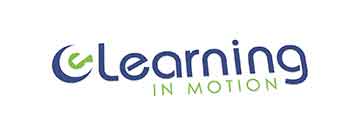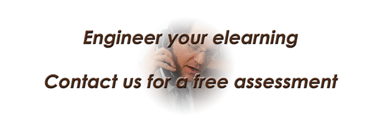I always use the PowerPoint analogy to explain to others how you build projects with Articulate Storyline (you know, the menus, tools, and so on, do look like those in PP). But this is a simplified way of looking at it, and those of us who have been working with this tool for quite some time know that a Storyline project is more than a simple slide show, in this instance I will have to use the same analogy in this post to bring my point home. Unlike a slideshow where you can jump in and build it up as you go along, a Storyline project can become quite messy if you just dive in with no planning ahead. I will take this claim further by stating that this is true for any other authoring tool. If you are new to working with a rapid authoring tool such as Articulate Storyline, Lectora, or Adobe Captivate, it pays off starting off to spend some time developing a plan, if you have been using these tools for some time, you know what I am referring to, this plan is commonly known as a storyboard.
There are no standards or requirements for making storyboards, although there is a minimum of information they should contain, we will return to this point later in this post. There are some paid solutions in the market that provide a collaborative tool where you can share the project with stakeholders and the draft goes through a series of reviews until a final draft project is moved on to an authoring tool. For example, Adobe offers Captivate Draft, although it only works on IPads; there this another solution called Storyboard That, which is web-based, both solutions require either purchasing a license or a subscription. Lectora and Articulate offer cloud options for you to post projects in progress that you can share with stakeholders, they can make comments and annotation on the project, which can later be converted into a full project within the cloud environment.
Of course, there is the cheap solution, although it requires some trial and error to arrive at a system that will provide an effective way of collecting the needed information for the development of the module. You can make this in a Word document or in a mock-up PowerPoint template that you can later circulate among the stakeholders. So, what minimum requirements should your storyboard contain? The first item should be the content, of course, which includes text, images, links, list of documents for resources, multimedia, and so on. You should also include the navigation structure of the module, if the course is linear, it would be a list of slides, in numerical order (or whatever ordering system works for you). You should provide a list of the required actions, animations, effects, and so on you will be introducing in each slide. Finally, you should indicate what type of testing, quizzing, or activity, you will be integrating in the module and how you will be reporting a final grade (if applicable). If possible, provide a proposed template design which should lay out the theme: this includes colors, backgrounds, shapes, and so on, you could quickly put this together in a slide in PowerPoint, and then add it to the storyboard as an image. Another option is to use the PowerPoint slides as the storyboard, instead of a Word document. In any case, stakeholders should be able to make comments and annotations on the storyboard.
It is a lot of work to prepare a storyboard, and you can see it in this post (they even have a free template for you to use). A paid solution can help a lot in creating one, but you still have to put some effort on it; in any case, the planning will pay off. This will avoid potential cases where the first draft of the proposed project would not match the expectations of stakeholders, which means an overhaul of the project, which translates on wasted time and resources in redoing the whole template and then the changes on the affected slides. Once everybody is on board with a design concept, then production can start, all kinks and wrinkles should be ironed and pressed, do not forget that the first review of the project should be done within the context of the storyboard, the storyboard helps the whole team focus on production glitches or unintended consequences on the design of the instruction, instead of basic elements such as the template and graphic design, which take some time to fix, time that could have been devoted to project improvements.
You can find a lot of help on the web on how to make a storyboard, here is a good example. As always, find us in social media. You can share this content by using the buttons below. If you have questions and comments, use the form at the bottom of this page, or contact me directly, and I will get back to you as soon as I can. Thank you for reading this post.

